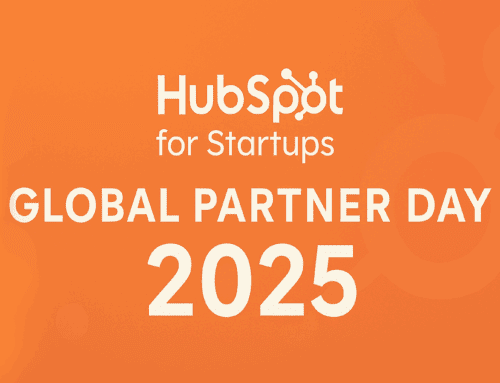How to Automate Google Contacts with Google Sheets
Introduction to Google Sheets and Google Contacts Automation
Have you ever thought about how much time we spend manually updating our Google Contacts? It’s one of those tedious tasks that can be easily automated. Imagine a world where every new contact added to your Google Sheets is automatically synced to your Google Contacts. Sounds like a dream, right?
Well, it’s not just a dream. With the right tools and a bit of guidance, you can set up a seamless integration between Google Sheets and Google Contacts. This automation not only saves time but also minimizes errors in data entry. Let’s dive into how you can achieve this using Make.
What is Make and How Does It Help?
Make is an intelligent automation tool that connects various applications and services to automate workflows. Think of it as your personal assistant that handles repetitive tasks while you focus on what truly matters. With Make, you can connect apps like Google Sheets and Google Contacts to create a streamlined process for managing your contacts.
This tool doesn’t require any complex coding knowledge, making it accessible for everyone. Whether you’re tech-savvy or a beginner, Make offers an intuitive interface to help automate your tasks efficiently. Let’s explore how Make works in the context of syncing contacts from Google Sheets to Google Contacts.
Setting Up Your Make Account
First things first, you’ll need to set up a Make account if you haven’t already. Signing up is straightforward. Once you’re signed in, you’ll find a user-friendly dashboard that guides you through creating your first automation, known as a scenario.
The beauty of Make lies in its simplicity. Even if you’re new to automation, it offers guided tutorials and templates to help you get started quickly. Now that you’ve set up your account, let’s move on to creating your first scenario.
Creating a Scenario in Make
In Make, a scenario is what you call an automated workflow. To start setting up your Google Sheets to Google Contacts automation, you’ll need to create a new scenario. In your Make dashboard, click on ‘Create a new scenario.’
Start by selecting Google Sheets as your trigger app. You’ll configure it to watch for new rows in your specified spreadsheet. This will be the starting point of your automation, where any addition in the Google Sheets will trigger the next steps in your workflow.
Configuring Google Sheets as a Trigger
Now, let’s get into the nitty-gritty of setting up Google Sheets as your trigger. You will select the specific spreadsheet and worksheet where your new contact information will be stored. The idea here is to set up a watch action so that whenever a new row is added, it triggers the automation.
This configuration ensures that each new entry in your Google Sheets is recognized immediately by Make. No more manual checking or transferring data—it’s like having a virtual assistant that never sleeps!
Connecting Google Contacts as a Module
Once your Google Sheets trigger is set up, it’s time to connect Google Contacts as a module in your scenario. In Make, modules are the building blocks that perform specific actions when triggered. Here, you’ll be setting Google Contacts to add a new contact with the details from your Google Sheets.
Make sure to map the fields correctly. For instance, if your spreadsheet has columns for names, phone numbers, and email addresses, these should correspond accurately to the respective fields in Google Contacts. This mapping ensures all data is transferred correctly and promptly.
Testing Your Automated Workflow
Before rolling out your automation, testing is crucial. Run a test by adding a row to your Google Sheets and watch how Make processes this change. The new entry should appear in your Google Contacts seamlessly.
Testing helps you iron out any kinks in your setup. If something doesn’t work as expected, Make provides detailed logs and error messages to troubleshoot effectively. This step-by-step validation ensures your automation is robust and reliable.
Benefits of Automating Google Contacts
Automating your contacts management comes with numerous advantages. Firstly, it saves you a significant amount of time. Rather than spending hours manually entering contact details, your Google Contacts are updated instantly with the latest information.
Moreover, automation reduces the risk of human error. Typos and omissions can lead to frustrating communication breakdowns. With automation, you can rest assured that all information is accurately recorded and accessible whenever you need it.
Conclusion: Embrace the Power of Automation
In today’s fast-paced world, automation isn’t just a luxury—it’s a necessity. By automating the process of adding Google Contacts through Google Sheets, you are embracing efficiency and smart working. This integration might seem small, but it has a substantial impact on productivity and data accuracy.
As you continue exploring other automation possibilities with Make, you’ll find countless ways to optimize everyday tasks. Say goodbye to repetitive tasks and hello to a more streamlined workflow. Embrace the future of automation, and let technology do the heavy lifting for you!
Frequently Asked Questions
Can Make be used for other Google Apps integrations?
Absolutely! Make supports integration with a plethora of Google Apps like Google Drive, Google Calendar, and more. This flexibility allows you to create comprehensive automated workflows across multiple platforms.
Do I need coding skills to use Make?
No, you don’t need any coding skills to use Make. Its intuitive interface is designed for users of all technical levels, providing guided steps to build your scenarios effortlessly.
How secure is my data with Make?
Make prioritizes data security and privacy. It uses encryption and secure protocols to ensure that your data is safe while being processed or transferred between applications.
Is there a limit to the number of scenarios I can create?
The number of scenarios you can create with Make depends on your subscription plan. Free plans offer a limited number of scenarios, while paid plans provide more flexibility and advanced options.
What if I face issues while setting up the automation?
If you encounter any challenges, Make offers comprehensive support including tutorials, a community forum, and direct support options to assist you in troubleshooting any issues.









